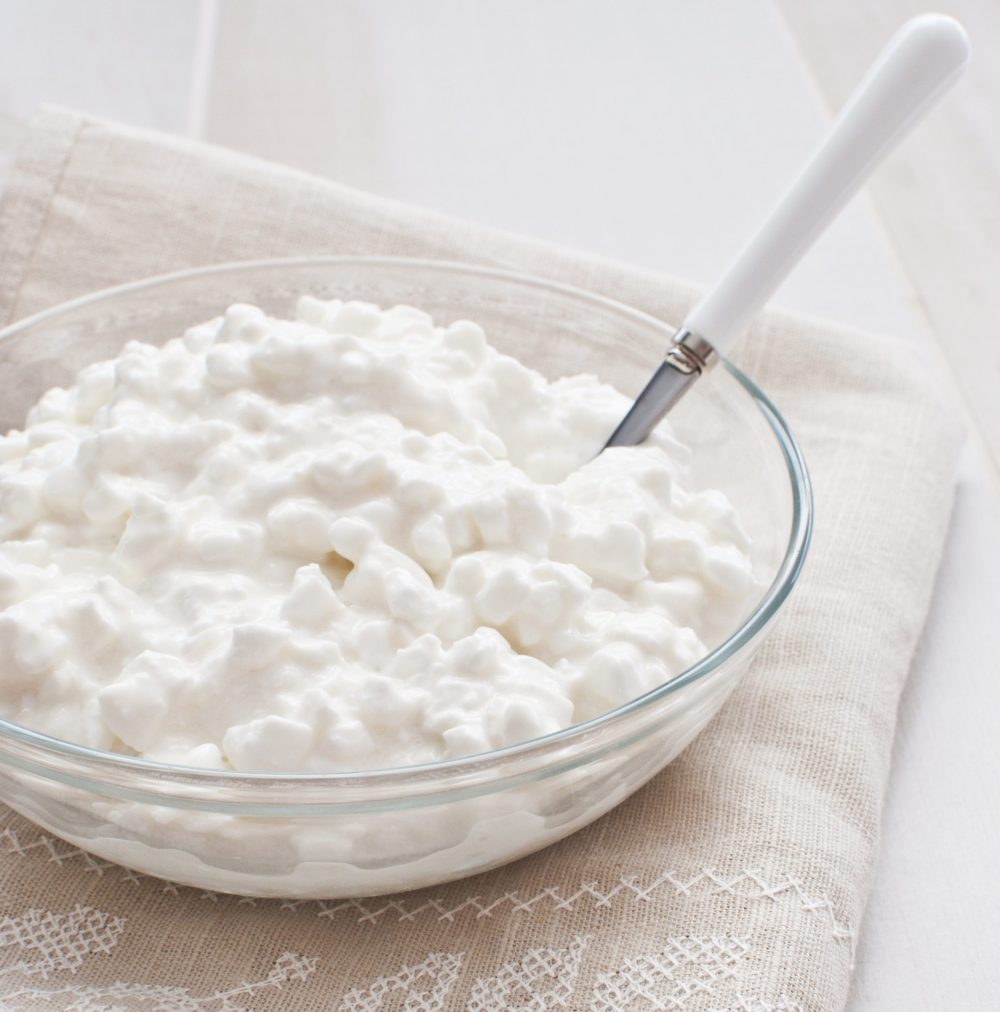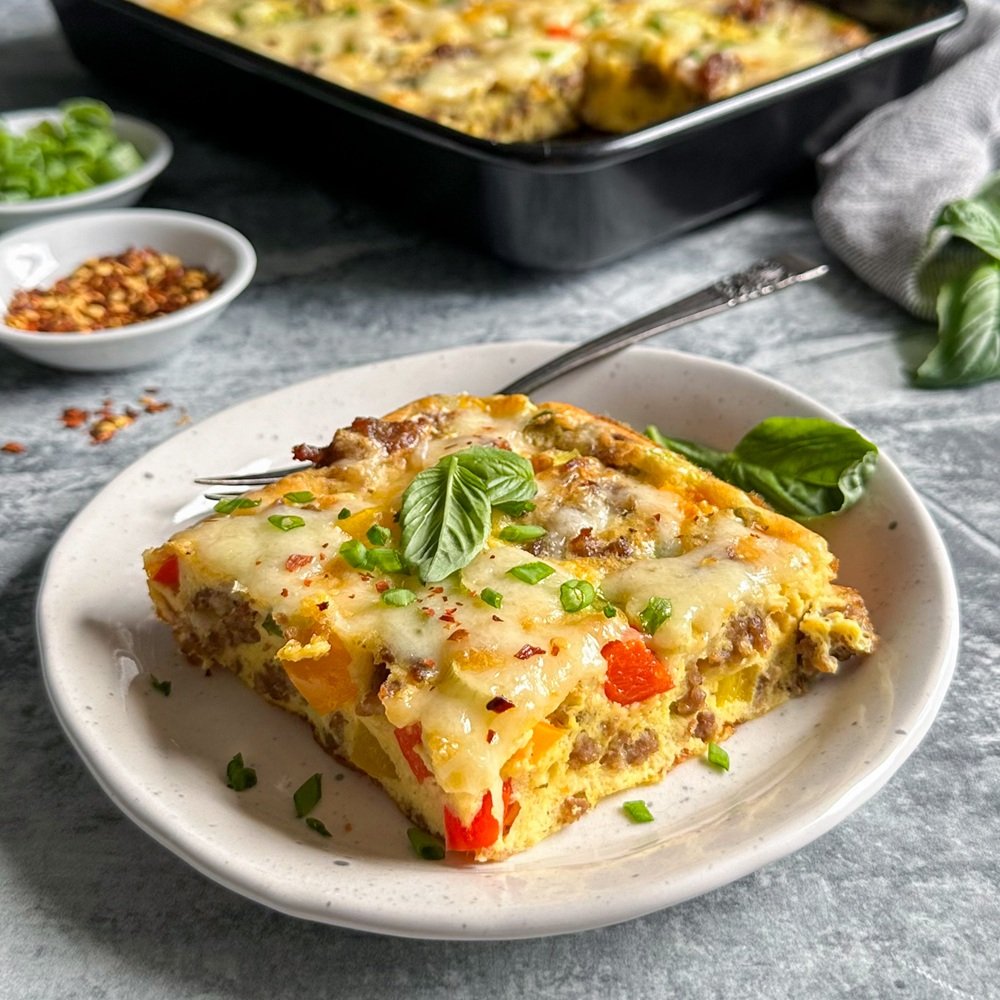After two years, the cottage cheese trend isn’t going anywhere. If you’re like me and love this versatile, high-protein ingredient, then you know that cooking with cottage cheese is a whole different beast.
If you get it too hot, it separates. Some brands are watery while others are incredibly thick. Not all cottage cheese is created equal. These tips will set you up for success, especially when making savory cottage cheese recipes that require heating.
You may also like my round-up of savory cottage cheese bowls, which are perfect for quick and healthy meals, as well as this high-protein egg bake!

I was obsessed with cottage cheese long before it became a trend, and I have been sharing my recipes on Instagram stories for years. From cottage cheese omelets to every kind of sauce and dip combination you can think of, I’ve probably tried it! I love cooking cottage cheese, but it can be finicky.
Cottage cheese is high in protein, with one cup providing 14 to 20 grams, depending on the brand. It’s nutrient-rich, low in calories, and fermented, making it an excellent source of gut-friendly probiotics. It’s a versatile ingredient that can be enjoyed with your favorite crackers for a quick, high-protein snack, blended into a dip or dressing, and even added to pasta sauces for creaminess. I’ve created dozens of cottage cheese recipes, and after years of trial and error, I’ve learned a few valuable lessons.
Cooking With Cottage Cheese
Taste, texture, and consistency can vary from brand to brand. Some are mild and almost sweet, while others are pretty tangy. Consistency can range from large curds, typically wetter, to small curds, which are thick and creamy. It’s a personal preference, and you may need to try a few different brands before finding one you like. I love Good Culture and Nancy’s Organic.
Excess liquid can cause issues when cooking with cottage cheese. The more moisture that’s in the cottage cheese, the more problematic this can be. So, if I’m going to make something like cottage cheese queso, which needs to be heated, I’ll use a very thick and rich cottage cheese like the two I mentioned above.
- Draining it overnight can help. Place a medium-sized fine-mesh strainer over a bowl large enough to hold it without touching the bottom. Add the cottage cheese, then tightly cover the bowl with foil and refrigerate overnight. You’ll be surprised how much liquid (whey) will be at the bottom in the morning!
Don’t get it too hot. Expanding on what I just said, when cottage cheese gets too hot, the curds can separate from the whey, resulting in a watery mess and/or a grainy texture. Here are a few tips to prevent this.
- Draining the cottage cheese removes most of the whey, so less liquid can separate.
- Use gentle heat to prevent the cottage cheese from getting too hot.
- Adding a bit of cornstarch or starchy pasta water helps stabilize the sauce.
- Using eggs, extra cheese, and/or evaporated milk in the sauce helps prevent separation.
All these things can help, but nothing is 100% if you let the cottage cheese get too hot. Now that we know the potential issues and how to prevent them, I’ll share some of my favorite savory ways to enjoy it.
Cottage Cheese Queso Dip

One of my favorite ways to use cottage cheese is to whip it into a creamy, high-protein dip, and I’m obsessed with this queso-style version!
- Add cottage cheese and salsa to a blender or small food processor.
- Blend on high speed until smooth and creamy.
- Transfer the cottage cheese mixture to a small, non-stick pan over medium-low heat.
- Add some grated cheddar cheese to the pan and start stirring slowly.
- Continue stirring until the mixture is warmed and the cheese has just started to melt.
- Remove it from the heat. The residual heat will melt the cheese completely.
- This isn’t meant to be blazing hot-just warmed through enough to melt the cheese.
- Taste and adjust the salt and pepper. Add your favorite hot sauce and spices to jazz it up, and have fun with garnishes. Enjoy with chips and veggie slices!
Blending the cottage cheese will make it a smooth, creamy sauce. This is helpful if the texture bothers you or if you are using it in a creamy dressing or sauce, such as the queso above. I own the Ninja Blender Food Processor System below and can’t say enough good things about it! It’s a powerful little workhorse that can be used as a blender, a food processor, and a chopper. I highly recommend this!
High-Protein Egg Dishes

Unless you’ve been living under a rock, you’ve likely seen dozens of egg bite recipes using cottage cheese. I personally love adding this cottage cheese to egg bakes and egg bites. It adds extra protein and flavor!
However, it can also ruin the consistency if you’re not careful. As I mentioned earlier, cottage cheese can contain a significant amount of moisture, which can result in a dense and rubbery texture. I suggest using good-quality, thick cottage cheese, or draining it. I’m the self-proclaimed queen of egg bakes, and I make them all the time on Instagram stories. This sausage egg bake is one of my favorites and very versatile!
Savory Cottage Cheese Bowls

When we’re not cooking with cottage cheese, we’re making simple cottage cheese bowls, and many of the toppings are cooked, just like in my ground beef cottage cheese bowl. The base of any cottage cheese bowl is—well—cottage cheese. I like to spread it around the bottom of the entire bowl. This way, when I eat, I get a bit of it with every bite. Here are a few of my favorite combinations.
- Cottage cheese, rice, tuna salad, Sriracha, and scallions.
- Cottage cheese topped with a simple salad of tomatoes, cucumber, and onion, pictured above.
- Cottage cheese, chicken sausage, bell peppers, red onions, and scallions.
- Cottage cheese, crispy bacon, hard-boiled eggs, peas, and bagel seasoning.
- Cottage cheese, chicken sausage, kimchi, scrambled eggs, sesame seeds, and scallions.
They’re incredibly versatile and a great way to use odds and ends. The variations are literally endless!
Baking Tips
Baking with cottage cheese is a fantastic way to add flavor, protein, and moisture to your baked goods. When you bake with cottage cheese, you typically combine it with flour, which does a fantastic job absorbing excess moisture.
However, depending on the brand, cottage cheese can vary in moisture and texture, which can affect how your baked goods turn out. Some brands are wetter and may make your dough too soft or sticky. You can usually fix this by adding a bit more flour, but for best results—especially if you’re new to baking—follow a well-tested recipe and use the same brand of cottage cheese the recipe creator used. Draining your cottage cheese is also key, particularly if it’s on the wetter side, to prevent excess moisture in your dough.
I hope this post has provided you with some valuable tips for success when cooking with cottage cheese. If you have any suggestions, please share them in the comments below!
Leave a Reply